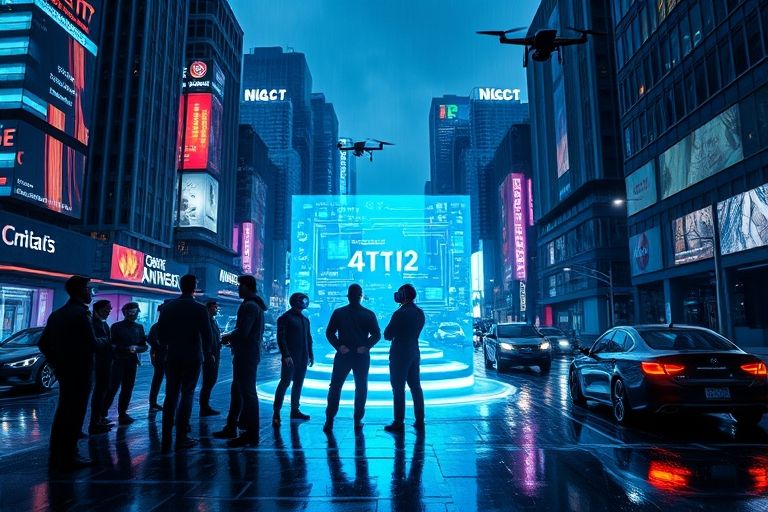The Impact of AI on Cybersecurity
With the rapid advancement of technology, artificial intelligence (AI) has emerged as a game-changer in various industries. One such area where AI is making a significant impact is cybersecurity. As cyber threats become more sophisticated and frequent, organizations are turning to AI-powered solutions to enhance their defense mechanisms. In this article, we will explore the different ways in which AI is revolutionizing cybersecurity and its implications for the future.
1. Threat Detection and Prevention
AI has the ability to analyze vast amounts of data in real-time, enabling faster and more accurate threat detection. Machine learning algorithms can detect patterns and anomalies that may indicate a cyber attack, even in the most complex and dynamic environments. By continuously learning from new data, AI systems can adapt and improve their detection capabilities, staying ahead of evolving threats.
1.1. Intrusion Detection Systems
AI-powered intrusion detection systems (IDS) can monitor network traffic and identify suspicious activities. These systems can detect unusual network behavior, such as unauthorized access attempts or abnormal data transfers, and issue alerts to security teams. By analyzing historical data and comparing it with real-time network activity, AI-powered IDS can identify patterns associated with known attack vectors and proactively identify potential threats.
1.2. Malware Detection
Traditional signature-based antivirus solutions are no longer sufficient to combat the ever-growing number of malware variants. AI algorithms can analyze the behavior and characteristics of files to identify potential malware, even if it has not been seen before. By leveraging machine learning and deep learning techniques, AI-powered malware detection systems can detect and block zero-day attacks, providing an additional layer of defense.
2. Incident Response and Mitigation
In the event of a cyber attack, AI can play a crucial role in minimizing the impact and facilitating swift incident response. AI-powered incident response systems can automate the detection, analysis, and containment of security incidents, reducing the time it takes for human intervention. By leveraging AI, organizations can quickly identify the source of the attack, assess the damage, and take appropriate remedial actions.
2.1. Automated Threat Hunting
AI can assist cybersecurity analysts in hunting for hidden threats within an organization's network. By analyzing vast amounts of data from various sources, including logs, network traffic, and endpoint telemetry, AI-powered threat hunting tools can identify indicators of compromise and potential vulnerabilities. This proactive approach allows organizations to detect and mitigate threats before they cause significant damage.
2.2. Intelligent Incident Response
AI-powered incident response platforms can assist security teams in prioritizing and responding to security incidents. By automatically correlating and analyzing security alerts from multiple sources, AI can help identify critical incidents that require immediate attention. Furthermore, AI algorithms can provide recommendations on the appropriate response actions based on historical data and predefined policies, enabling faster and more effective incident resolution.
3. Enhanced User Authentication
AI has the potential to revolutionize user authentication methods, making them more secure and user-friendly. Traditional authentication methods such as passwords can be easily compromised, leading to unauthorized access. AI-powered authentication systems can leverage biometrics, behavioral analysis, and contextual information to provide a more robust and frictionless authentication experience.
3.1. Biometric Authentication
AI can analyze biometric data, such as fingerprints, facial features, or voice patterns, to accurately authenticate users. Biometric authentication is more secure than traditional methods as it relies on unique physiological or behavioral characteristics. AI algorithms can continuously learn and adapt to changes in biometric patterns, ensuring reliable and secure authentication.
3.2. Behavioral Analysis
AI-powered systems can analyze user behavior patterns to detect anomalies that may indicate unauthorized access. By monitoring factors such as typing speed, mouse movements, and application usage, AI algorithms can establish a baseline of normal behavior for each user. Any deviations from this baseline can trigger alerts, indicating a potential security breach.
Conclusion
As the cybersecurity landscape continues to evolve, AI is becoming an indispensable tool in the fight against cyber threats. From threat detection and prevention to incident response and user authentication, AI-powered solutions are revolutionizing the way organizations secure their digital assets. However, it is important to note that AI is not a silver bullet and should be used in conjunction with human expertise and traditional security measures. By harnessing the power of AI, organizations can stay one step ahead of cybercriminals and protect their critical data and systems.
Custom Message: Stay ahead of cyber threats with AI-powered cybersecurity solutions!
